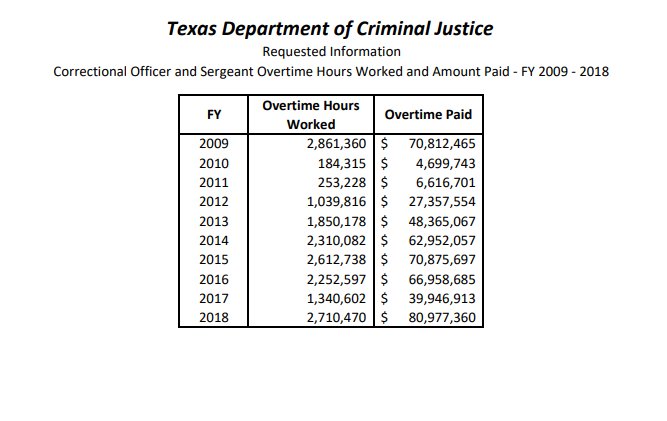Regular Grits readers know TDCJ has chronically short staffed several units in recent years, but the number with serious shortages is higher than any time during the two decades your correspondent has been tracking the agency.
In the past, when correctional officer (CO) vacancies would approach the ~4,000 mark, agency leaders began talking about a crisis. Today, vacancies are up to 5,500 systemwide, with 14 units reporting more than 40 percent of positions unfilled. If the press and public weren't distracted by eighty 9/11s worth of COVID deaths, this would be headline news.
We still don't fully understand the cause of the prisoner drop at TDCJ and whether it should be viewed as sustainable. For a while, TDCJ stopped taking prisoners from county jails. But those backlogs have been eliminated. Blakinger hypothesized that a reduction in parole revocations might explain it, but the numbers didn't bear it out.
Another hypothesis: Court systems slowed and fewer trials meant fewer plea bargains, meaning it's possible many more cases are awaiting adjudication than normal. Whether that means there will be a surge in admissions at some point in the future is anybody's guess.
Alternatively: Radical crime drops were reported this spring and, even though murder rates have reportedly increased over the summer, many types of crime may have continued to be dampened by the pandemic, including some lesser violent offenses. Or, the change may result from police enforcement patterns: Perhaps they're not performing as many hand-to-hand drug sales, for example, or maybe it relates to the reduction in public contacts at traffic stops thanks to reduced traffic? Perhaps police are initiating contacts with the public less frequently because of the virus. Who knows? It's been a crazy weird, year.
In a red-ink budget year, now's the time for the Texas Legislature to double down on these successes and close another half dozen prison units. (The state has closed 11 since 2013.)
As insurance against the possibility that prison populations might go back up, it'd be best if they combined such cuts with additional decarceral policies: One that comes to mind as low hanging fruit might be to eliminate testing for marijuana for probationers and parolees. In the wake of Texas' hemp statute, arrests for pot possession have fallen sharply statewide. Few people think marijuana use justifies imprisonment (possession of small amounts is only a misdemeanor), so there's no good argument that people under supervision should go to prison for it. Probation and parole revocations are a significant portion of TDCJ admissions, and even a marginal reduction in those categories would help sustain these lower prisoner levels.
Make Grits Philosopher King and there's much more that could be done. But it's perhaps far-fetched to imagine Texas will see significant criminal-penalty reductions in 2021. Already, dozens of new crimes and penalty increases have been filed as bills at the Texas Legislature. And #cjreform efforts at the Lege completely stalled out in 2019. Certainly, Grits sees little prospect for drug-penalty reductions like we've seen in Oklahoma, Utah, Oregon, and other states. And the Lege seems to have abandoned efforts to rein in technical probation revocations. Except for a handful of policing bills (e.g., the Sandra-Bland statute on Class C arrests and the George Floyd Act), and maybe some of debtors-prison stuff, not much #cjreform legislation enters the 86th session with significant momentum.
Regardless, at this point, it's not an exaggeration to say Texas prisons are dangerously understaffed and nothing the agency has done for the past decade has caused staffing shortages to abate. Moreover, COVID makes prisons an even less inviting and more dangerous workplace (certainly the virus is a greater risk to CO's lives, by far, than prisoner violence).
Closing several more units - ideally targeting remote, rural units which are hardest to keep staffed - really is the only rational management move here, and it should have been done long ago. Past prison closures failed to take into account staffing shortages, closing well-staffed units and leaving these rural outliers to fester. Now, those poor decisions are coming home to roost.




.jpg)